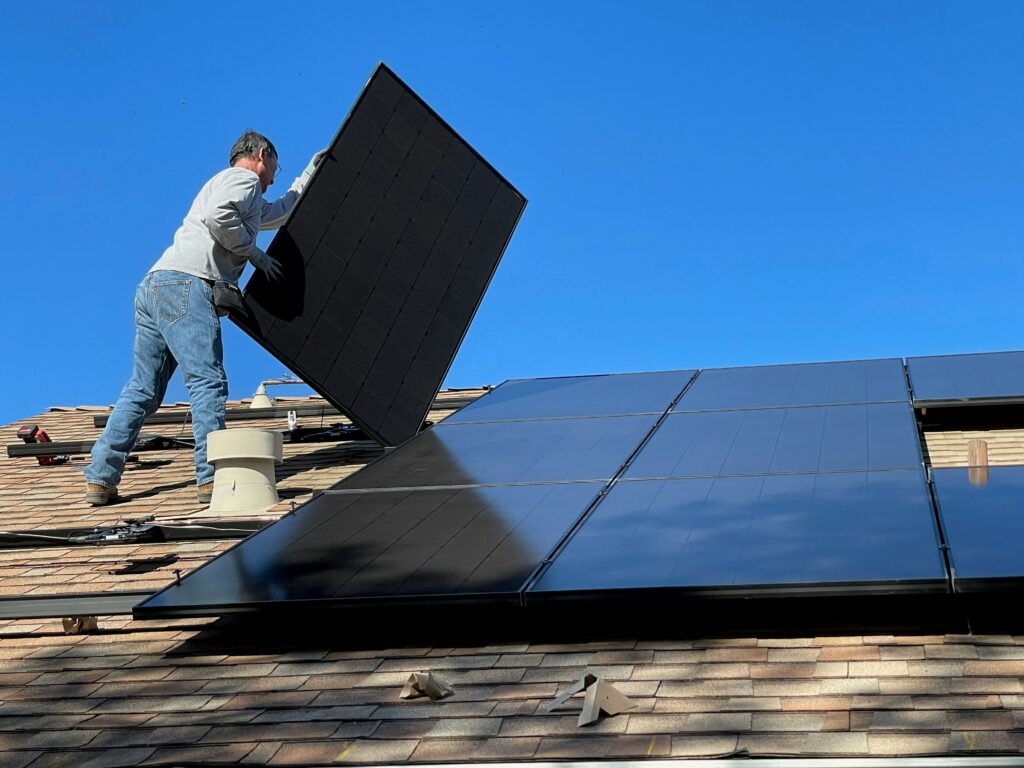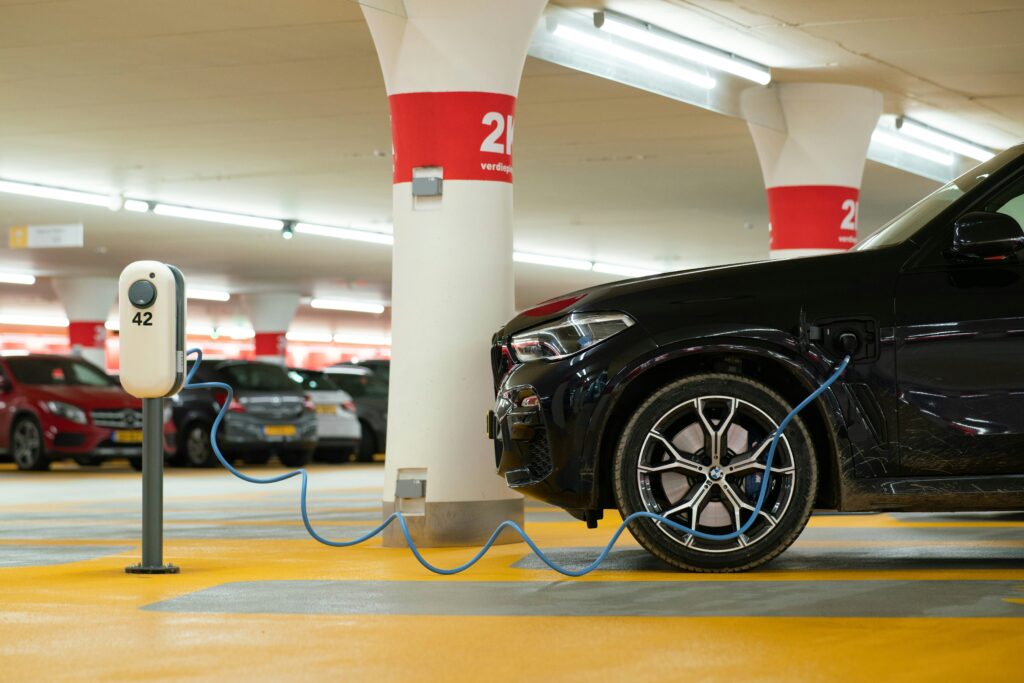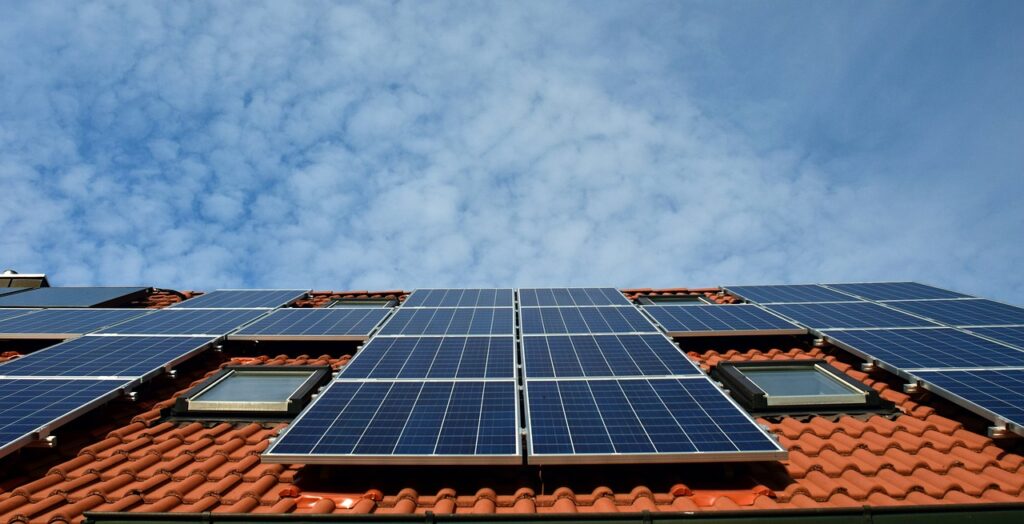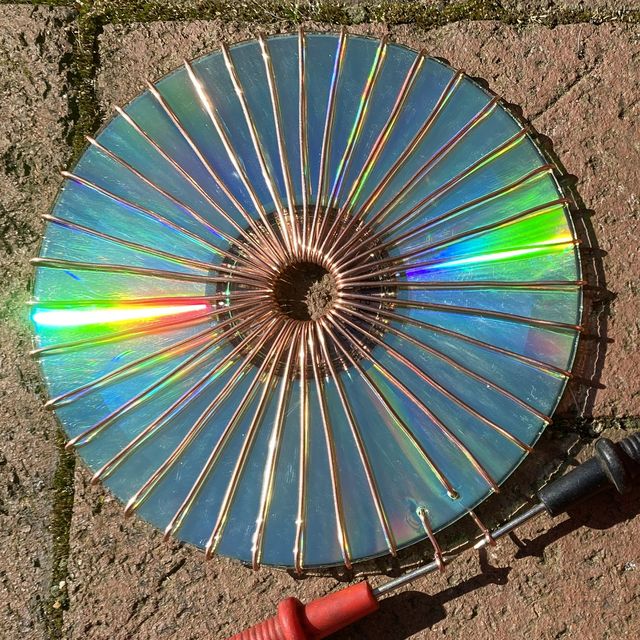In order to make a solar panel at home easily, follow these steps. A brief introduction to this process will be provided in the following 120 words.

Harnessing solar energy for personal use has become an increasingly popular choice for households looking to save on electricity bills and reduce their carbon footprint. Making a solar panel at home allows you to generate your own renewable energy efficiently and economically.
The process involves a few simple steps that anyone can follow. From gathering the necessary materials to assembling the solar cells and wiring them together, creating a DIY solar panel is an accessible project for beginners and experts alike. By exploring this guide, you will discover a step-by-step approach to making a solar panel at home with ease, allowing you to contribute to a cleaner and more sustainable future.

Credit: www.facebook.com

Understanding Solar Energy
Learn how to easily make a solar panel at home and harness the power of solar energy. Embrace a sustainable and cost-effective solution for your energy needs.
What Is Solar Energy?
Solar energy is the radiant light and heat from the sun that has been harnessed by humans for centuries. It is a clean, renewable energy source that offers a sustainable alternative to traditional fossil fuels. Understanding solar energy involves recognizing its potential as a reliable and eco-friendly power source.
How Solar Panels Work
Solar panels, also known as photovoltaic (PV) panels, convert sunlight into electricity through the photovoltaic effect, where semiconducting materials absorb photons from the sun, releasing electrons that generate an electric current. It’s crucial to grasp how solar panels work for successful implementation of solar energy systems.

Credit: www.popularmechanics.com
Materials Needed
When it comes to making your own solar panel at home, having the right materials is essential. By gathering the necessary components, you can embark on a DIY project that will not only save you money but also contribute to a sustainable future. Let’s explore the materials needed to create your homemade solar panel.
Solar Cells
Solar cells are the heart of your DIY solar panel. They are responsible for converting sunlight into electricity. These cells come in various types, such as monocrystalline, polycrystalline, and thin-film. Each type has its advantages and disadvantages, so choose one that suits your requirements and budget.
Bus Wire
Bus wire is essential for connecting the solar cells. It acts as the main conductor, allowing the electricity to flow smoothly. Make sure to use a high-quality bus wire that has good conductivity and can withstand the weather conditions of your area.
Tabbing Wire
Tabbing wire is used to connect the individual solar cells together. It is a thin, solder-coated wire that ensures the cells are properly connected and allows the electricity to pass from one cell to another efficiently.
Flux Pen
A flux pen is a handy tool that helps in soldering the tabbing wire to the solar cells. It helps remove oxides from the surface and improves the soldering process. Apply the flux to the soldering joints for better adhesion and conductivity.
Soldering Iron
A soldering iron is used to heat and melt the solder, connecting the tabbing wire to the solar cells. It is advisable to use a temperature-controlled soldering iron to avoid damaging the cells while soldering. Always follow safety precautions while working with a soldering iron.
Glass Sheet
A sturdy and transparent glass sheet is essential to protect the solar cells from external elements. It acts as a barrier against dust, moisture, and other weather conditions. Ensure that the glass sheet is of good quality and the appropriate size for your solar panel.
Aluminum Frame
An aluminum frame provides structural support to the solar panel. It prevents the glass sheet from cracking and maintains the overall stability. Choose a durable aluminum frame that can withstand the weight of the glass and cells.
Silicone Sealant
Silicone sealant is used to secure the glass sheet onto the frame and create a waterproof seal. It prevents any moisture or dust from entering the solar panel and damaging the cells. Apply a generous amount of silicone sealant along the edges of the frame for maximum protection.
Step-by-step Guide
Interested in harnessing the power of the sun and reducing your energy bills? Making a solar panel at home might be easier than you think. With a step-by-step guide, you can create your own solar panel system without breaking the bank. In this article, we’ll walk you through the process of building your own solar panel from start to finish.
Preparing Solar Cells
To begin, you’ll need solar cells. Solar cells are the heart of your solar panel, converting sunlight into usable electricity. Here’s how to prepare them:
- Inspect each solar cell for any damages or cracks, ensuring they are all in good condition.
- Clean the surface of the solar cells with a mixture of soap and water to remove any dirt or debris.
- Dry the solar cells thoroughly using a lint-free cloth.
Connecting Solar Cells
After preparing the solar cells, the next step is to connect them together. Here’s how you can do it:
- Arrange the solar cells in the desired pattern, ensuring positive and negative terminals align.
- Apply a small amount of flux onto the back of each solar cell.
- Using a soldering iron, solder the tabs of one cell to the bus wires of the adjacent cell, creating a series connection.
- Repeat this process for all the solar cells, creating the desired number of series connections.
Mounting Solar Cells
Once the solar cells are connected, you’ll need to mount them securely to create the solar panel structure. Here’s how:
- Prepare a sturdy backing material, such as plywood, to serve as the base for your solar panel.
- Place the connected solar cells onto the backing material, ensuring they are evenly spaced.
- Secure the solar cells to the backing material using a strong adhesive or by drilling holes and screwing them in place.
Attaching Bus Wire
After mounting the solar cells, it’s crucial to attach the bus wire to ensure proper electricity flow. Follow these steps:
- Measure and cut the appropriate length of bus wire.
- Strip the insulation from the ends of the bus wire.
- Connect one end of the bus wire to the positive terminal of the first solar cell, and the other end to the negative terminal of the last solar cell.
- Solder the connections for a secure and reliable bond.
Tabbing Solar Cells
Tabbing the solar cells helps to increase the efficiency of your solar panel. Here’s how you can do it:
- Apply flux to the front surface of each solar cell.
- Place the tabbing wire on top of the solar cell, ensuring it aligns with the bus wire.
- Use a soldering iron to solder the tabbing wire to the bus wire, creating a secure connection.
- Repeat this process for each solar cell.
Soldering Solar Cells
Soldering the solar cells together is crucial for forming a strong electrical connection. Follow these steps:
- Apply flux to the back surface of each solar cell.
- Place the tab wires on top of the solar cells, aligning them with the bus wires.
- Use a soldering iron to solder the tab wires to the bus wires, ensuring a secure bond.
- Repeat this process for each series of solar cells.
Assembling The Panel
Finally, it’s time to assemble everything into a functional solar panel. Here’s what you need to do:
- Connect the bus wires of each series of solar cells together, creating parallel connections.
- Attach a diode to one of the bus wires to prevent backflow of electricity.
- Mount the assembled solar cells onto the backing material securely.
- Connect the positive and negative terminals of the solar panel to a charge controller or battery to capture and store the generated electricity.
By following these step-by-step instructions, you can make your own solar panel at home easily. Not only will you save money in the long run, but you’ll also contribute to a cleaner and more sustainable future.

Credit: m.youtube.com
Testing And Maintenance
Learn how to easily make solar panels at home with this step-by-step guide. From testing to maintenance, you’ll discover all the necessary techniques to harness clean energy efficiently and cost-effectively.
Testing and maintaining your homemade solar panel is essential to ensure its efficiency and longevity. By following proper procedures, you can identify any issues and keep your solar panel operating optimally. Let’s dive into the testing and maintenance process to ensure your solar panel consistently generates green energy for your home.
“`html
Testing The Solar Panel
“`
After assembling your homemade solar panel, it’s crucial to conduct thorough testing to verify its functionality. Utilize a multimeter to measure the voltage and current output of the solar panel in varying sunlight conditions. Ensure that all connections are secure and free from damage or corrosion.
“`html
Troubleshooting Common Issues
“`
If you notice any irregularities during testing, it’s important to promptly address them. Common issues may include inconsistent power output, loose connections, or shading on the solar panel. Check the wiring for any faults and ensure that the panel is receiving direct sunlight without any obstructions.
“`html
Maintenance Tips
“`
Regular maintenance is key to prolonging the lifespan of your homemade solar panel. Keep the panel clean by gently washing it with a mild soap and water solution to remove dirt and debris that could hinder its performance. Inspect the panel for any physical damage, such as cracks or scratches, and replace any damaged components promptly to prevent further issues.
In addition, periodically examine the mounting system to ensure it remains secure and stable. Check the connections and wiring for signs of wear or corrosion and tighten any loose components as needed. By conducting routine maintenance, you can maximize the efficiency and durability of your DIY solar panel.
Frequently Asked Questions Of How To Make Solar Panel At Home Easy
Can I Make A Solar Panel At Home Without Any Prior Experience?
Yes, you can make a solar panel at home even if you have no prior experience. The process is simple and requires basic knowledge of electrical components.
What Materials And Tools Do I Need To Make A Solar Panel At Home?
To make a solar panel at home, you will need materials such as solar cells, a tabbing wire, a flux pen, a soldering iron, and a backing sheet. Additionally, you will need tools like a wire cutter and a soldering iron.
How Much Money Can I Save By Making My Own Solar Panel At Home?
Making your own solar panel at home can save you a significant amount of money. On average, you can expect to save up to 50% or more compared to buying a commercial solar panel. Plus, you’ll have the satisfaction of creating your own energy source.
Conclusion
Making solar panels at home is a feasible and eco-friendly way to harness sustainable energy. With the right materials and instructions, anyone can create solar panels, contributing to a greener environment. DIY solar panels not only save money but also reduce reliance on non-renewable energy sources.
Get started and enjoy the benefits of solar power.